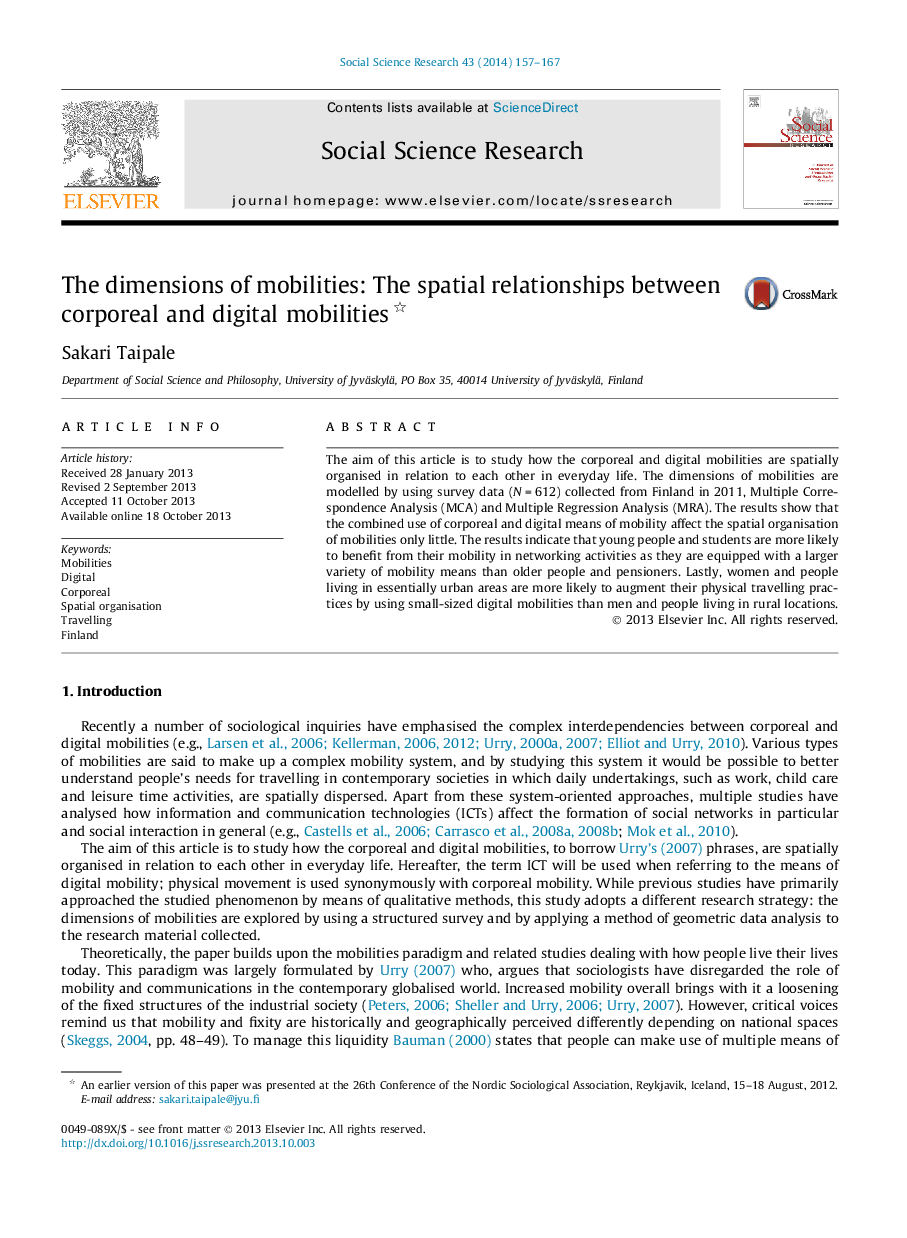| Article ID | Journal | Published Year | Pages | File Type |
|---|---|---|---|---|
| 955838 | Social Science Research | 2014 | 11 Pages |
•I investigate how corporeal and digital mobilities are linked with each other.•Corporeal and digital means of mobility are linked with each other relatively little.•Young people and students are equipped with a larger variety of mobility means.•Women and city dwellers augment physical travelling practices by using ICTs.
The aim of this article is to study how the corporeal and digital mobilities are spatially organised in relation to each other in everyday life. The dimensions of mobilities are modelled by using survey data (N = 612) collected from Finland in 2011, Multiple Correspondence Analysis (MCA) and Multiple Regression Analysis (MRA). The results show that the combined use of corporeal and digital means of mobility affect the spatial organisation of mobilities only little. The results indicate that young people and students are more likely to benefit from their mobility in networking activities as they are equipped with a larger variety of mobility means than older people and pensioners. Lastly, women and people living in essentially urban areas are more likely to augment their physical travelling practices by using small-sized digital mobilities than men and people living in rural locations.
